Epson – yes, that Epson, the company known for imaging and printing electronics – is trying its hand at running tech. Recently, Epson came out with five new GPS watches, all with affordable price points.
Canadian Running tested the ProSense 307, which is the mid-tier model of the five-watch release, which retail for as low as $129.99 (ProSense 17) up to $529.99 (ProSense 367). They all have GPS capability; four of the five include heart rate monitoring. (Did you know Boston and New York City Marathon champion Meb Keflezighi wears the 307?)
The 307 retails for $329.99, which is a fair price given the stats it tracks and features it offers. The top-tier models, above the 307, feature either a better battery life or Sapphire Glass (or both). Fortunately, for those not willing to spend in the mid-to-high triple-digits for a running watch (Epson or otherwise) the 307 does most, if not all, of what you need from the gadget on your wrist. Speaking of wrist, the watch size is pretty standard. The strap is basic rubber with plenty of strap holes for a custom fit. (The exact sizing is 47.0 x 47.0 x 13.4 mm and display resolution is 240 x 240 pixels, according to Epson.) The display is like that of the Amazon Kindle (electronic paper) which can be clearly read at all angles without glare.
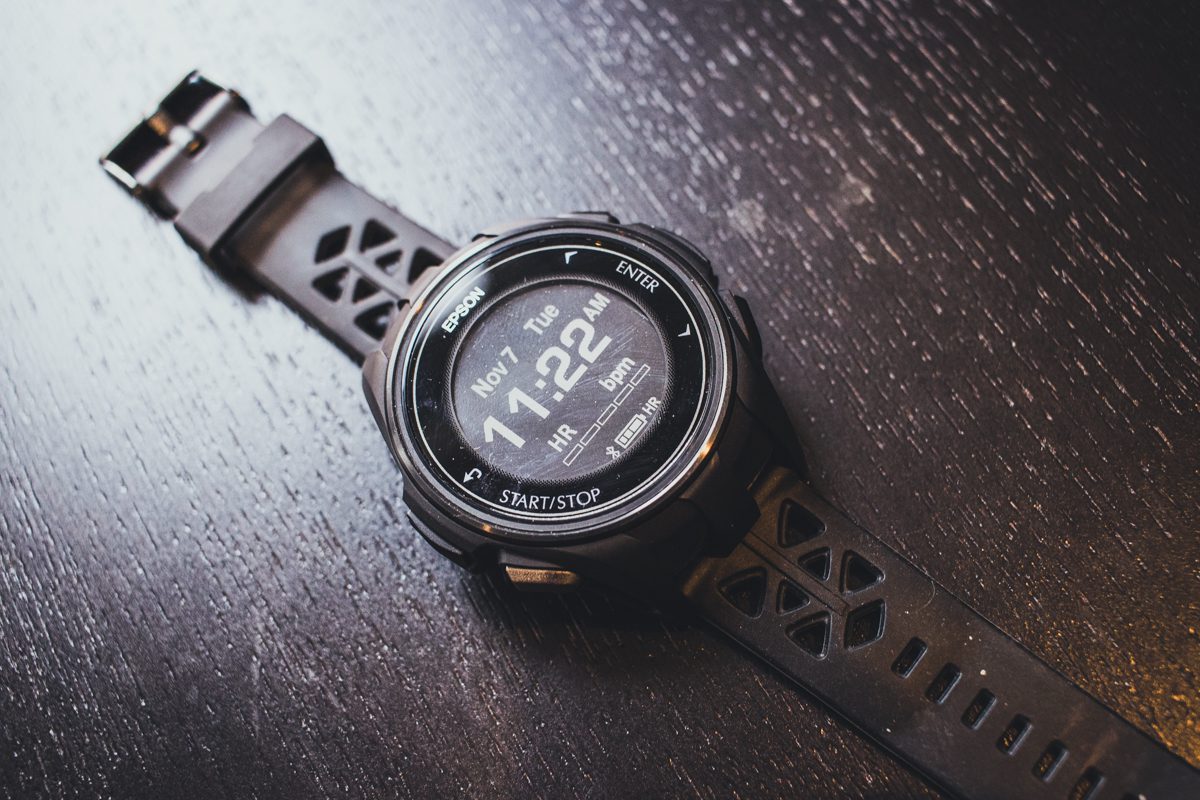
The contents of the package are pretty simple: the watch and the charger. The watch features optical heart rate (on the backside of the watch face) so there’s no need to fumble with a chest strap. The charger, with a USB port, is a bit different and connects like a claw. We found it takes longer than normal to fully charge compared to other competitor watches on the market. The watch features five buttons, two to the left and three to the right of the display, all black except for one, in silver, to mark the start/stop function. The buttons are soft and it’s sometimes hard to tell when one is fully pressed or not, an important consideration if you often stop at lights.
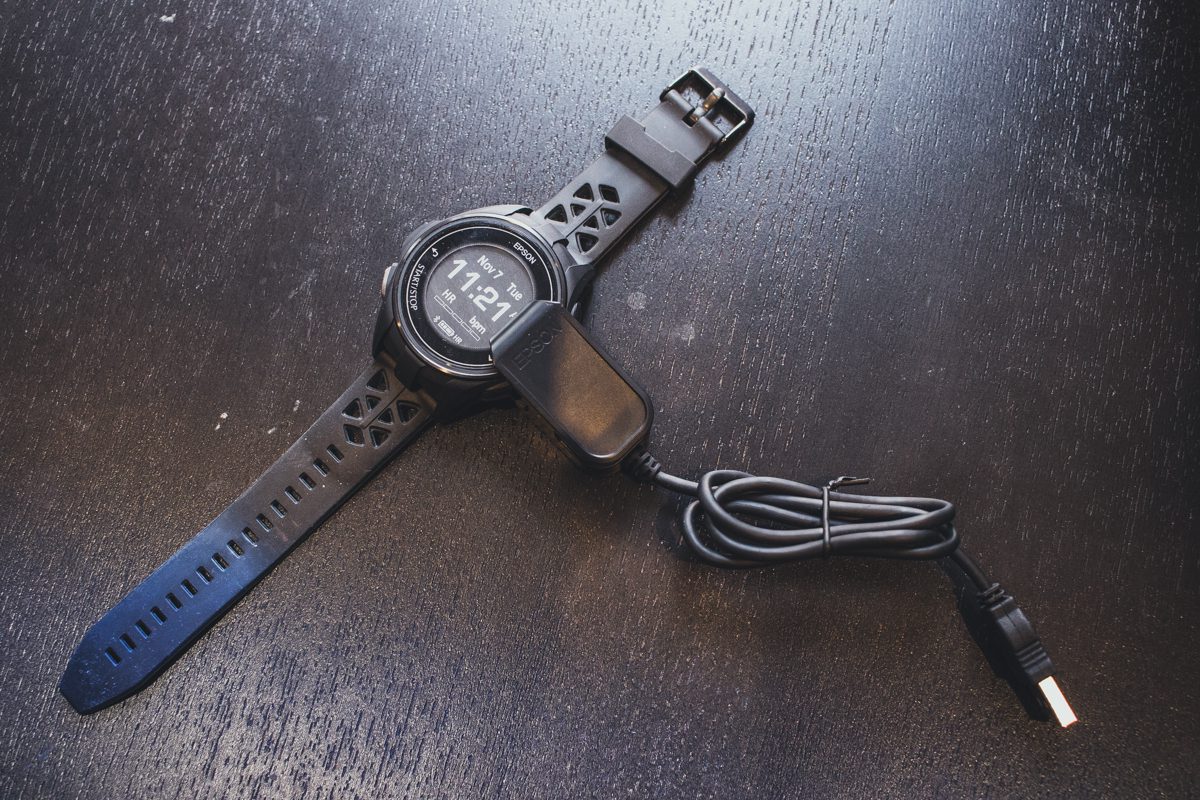
Epson says the battery life is up to 20 hours with GPS and heart rate. The watch, when used as a standalone daily activity tracker is advertised as having a battery lasting five to seven days. The longevity has been less than that in our experience though we haven’t used the watch exclusively as an activity tracker or GPS watch but instead opting to combine the two functions. The watch will sleep when left alone, and importantly, the 307 will remain active when on the wrist (with the tiniest of movements preventing it from going into sleep mode) so the activity tracker continues to function.
Granted, in regards to the battery life, previously we were testing the Epson Runsense SF-710, which was built like a BlackBerry – unmatched battery life, indestructible when dropped and stripped down in terms of its features. At the same time, it tracked very little: no HR, no cadence, no stride length, no activity tracker. The battery would last at least a week. (No lie.)
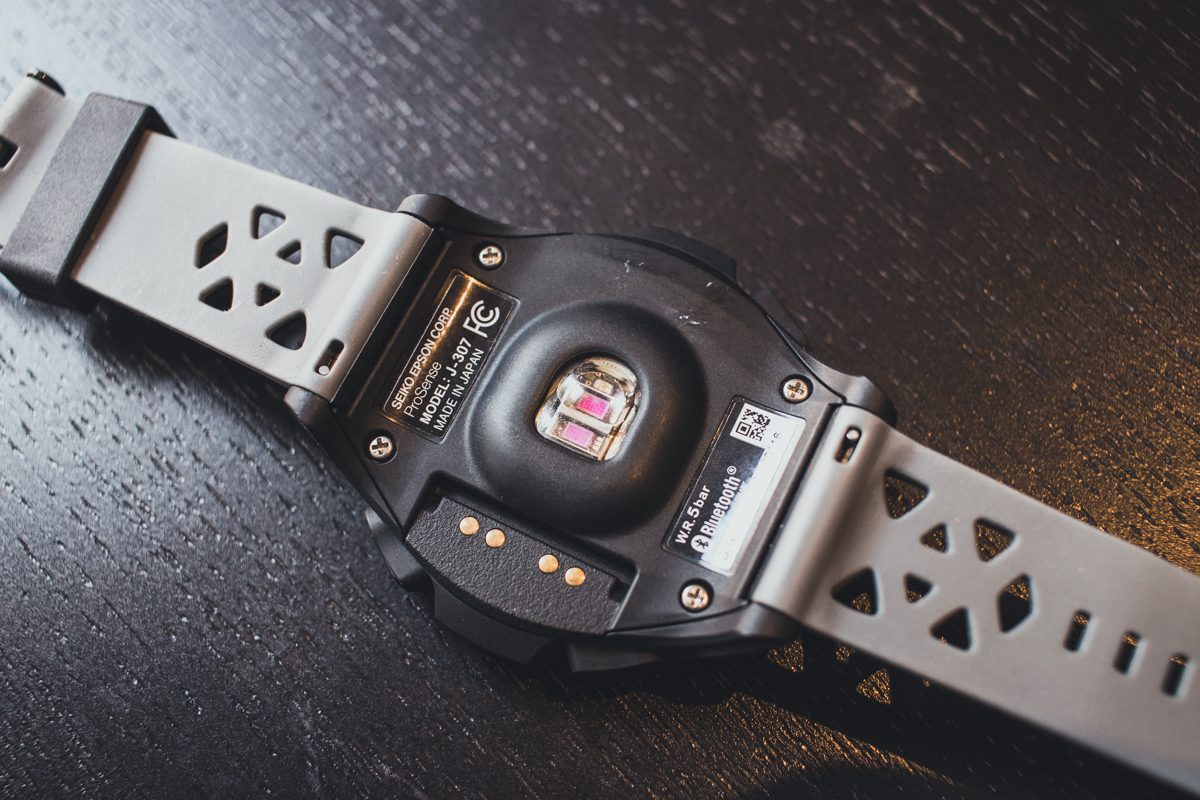
One major change related to the watch is Epson’s all-new app. Runners can see data on the watch itself, or on Epson View (the name of the app) which works with iOS, Android, PC and Mac. Epson View is a big step forward from Epson Run Connect, which required individually uploading runs. It was relatively slow and showed little compared to the View, which, during runs, tracks pace, distance, cadence, steps, heart rate, stride length, calories, laps, training effect and, perhaps the neatest of all, predicted race performance based off of estimated VO2 max. (You can compare two set of statistics at once too, like stride length with pace. The selected stats show up as highlighted blue and red.)
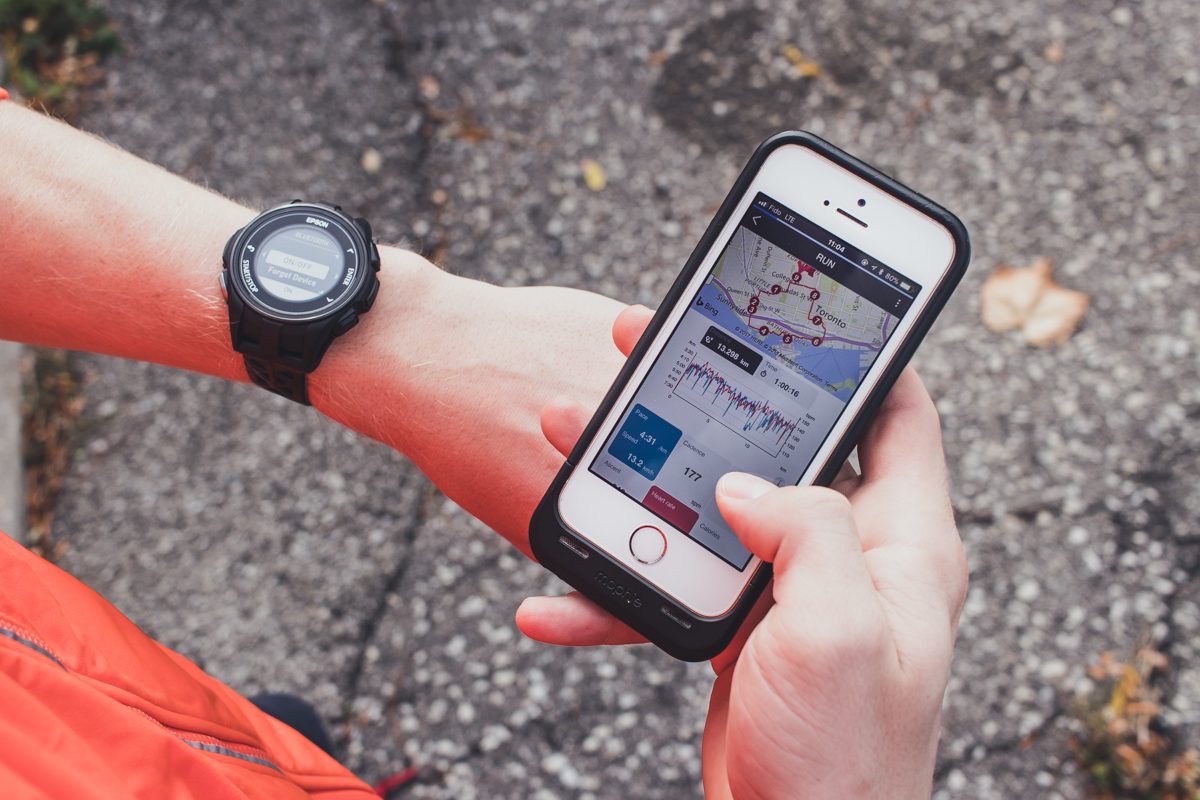
On one particular run, which you can see below, Epson estimated my predicted marathon PB to be 2:49. That wasn’t far off given it was an easy run, and, perhaps more importantly, while I wasn’t quite at peak fitness. It’s a nerdy and minor feature.
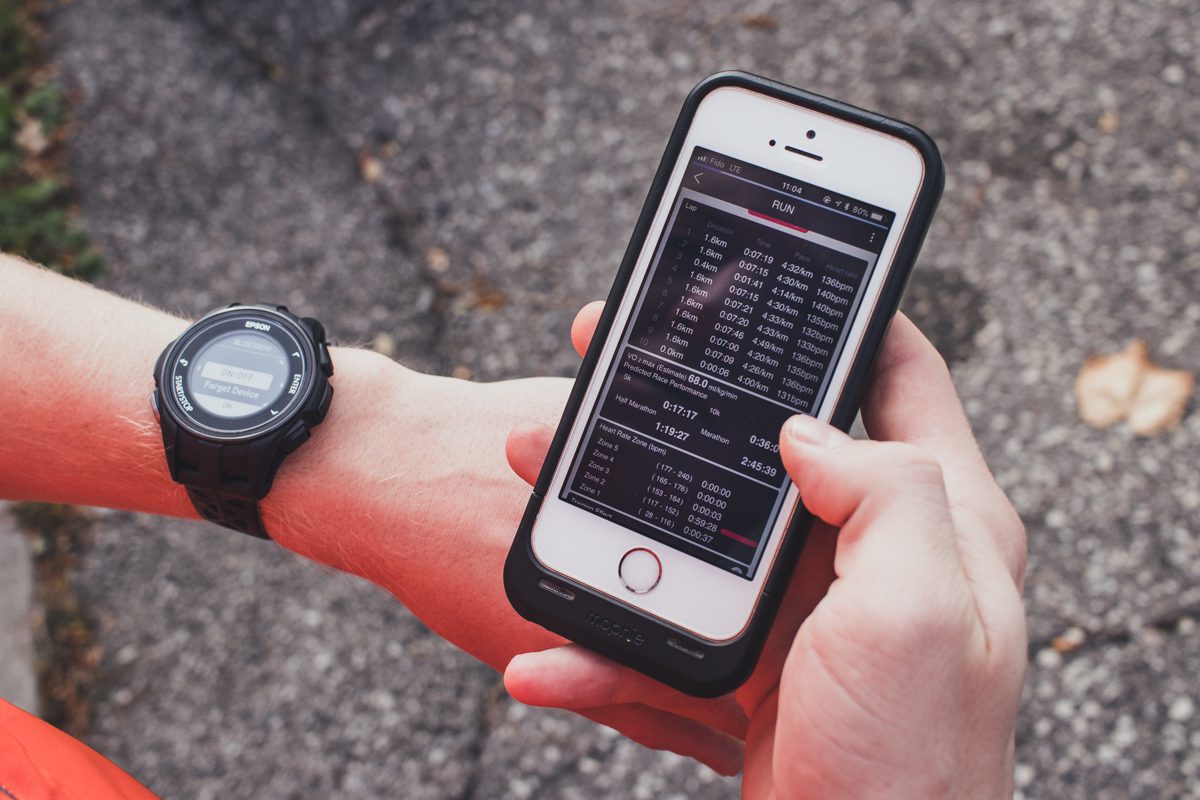
All activities auto-upload, and can do so to third-party applications like Strava, RunKeeper, MapMyFitness and Training Peaks when linked. (Strava, for one, won’t show all of the advanced data like Epson View does.) Through Bluetooth, you can also enable notifications from your smartphone. Plus, you can actually customize the watch face if you want certain statistics constantly viewable with others hidden. (Calories, for example, is a low priority for me.) The only downside is that each time you want to change any sort of settings, it takes up to 10 seconds for the watch and app to respond.
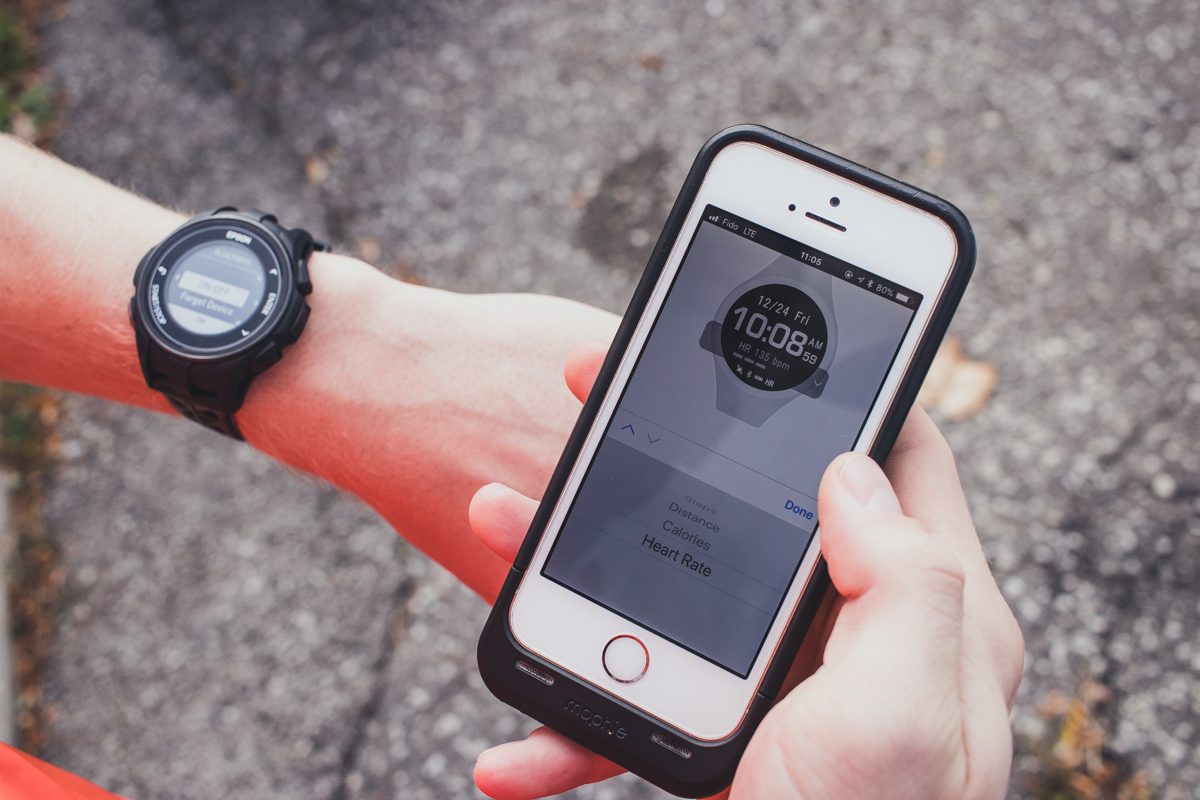
The GPS is remarkably accurate, even in dense urban sprawls with high-rises possibly blocking signal. In previous models, distance went down to the thousandth place – 1.001K, for example – and that trend continues with the ProSense 307 and similar models. If you’re a Type A runner, you’ll be able to hit 10.000K on the dot.
We found that the watch isn’t as fast as Garmin models with GPS signal linking, but it still performs fairly strong. (The ProSense 307 takes upwards of 30 seconds if you’re travelling and linking up from a distant location as it’s used to.) Starting a run is as simple as pressing start. Ending a run is as simple as pressing stop, pressing enter, then saving the run. You can skip the GPS linking part of the run and the 307 will find satellites as you go.
Linking up
One feature not seen often in GPS watches is waypoint navigation, which can be done through the app itself. We didn’t test this feature extensively but is certainly useful when travelling. When a watch has as many features as the 307, it seems to takes weeks, if not months, to actually explore them all. On the other hand, another feature you’ll notice almost right away is that, like an iPhone, the back light is activated when turned laterally (when you want to see the watch face). That’s super convenient on runs eliminating the need to actually press a back light button manually.
In the running industry there are plenty of options out there from well-known names Garmin, Suunto and Polar. Still, Epson seems to be on to something with a watch that retails for less than $350 (some GPS watches retail for more than $1,000) and can do much of what one could possibly expect from a watch. Still, it would be great to see Epson further improve the apps’ responsiveness and connectivity through Bluetooth. We would recommend the Epson ProSense 307 for a runner looking for an affordable watch but who is also interested and invested in in-depth statistics and activity tracking.
